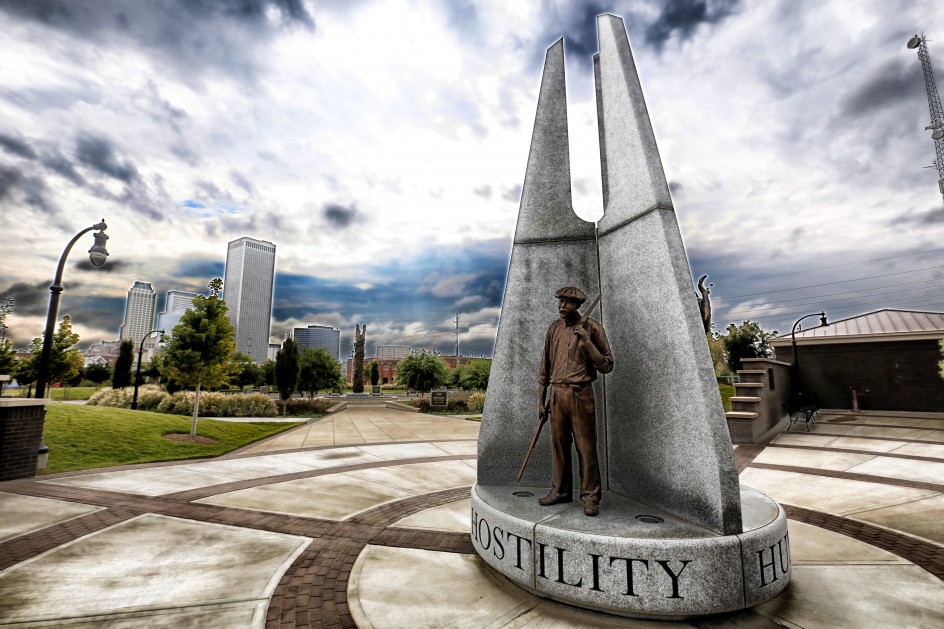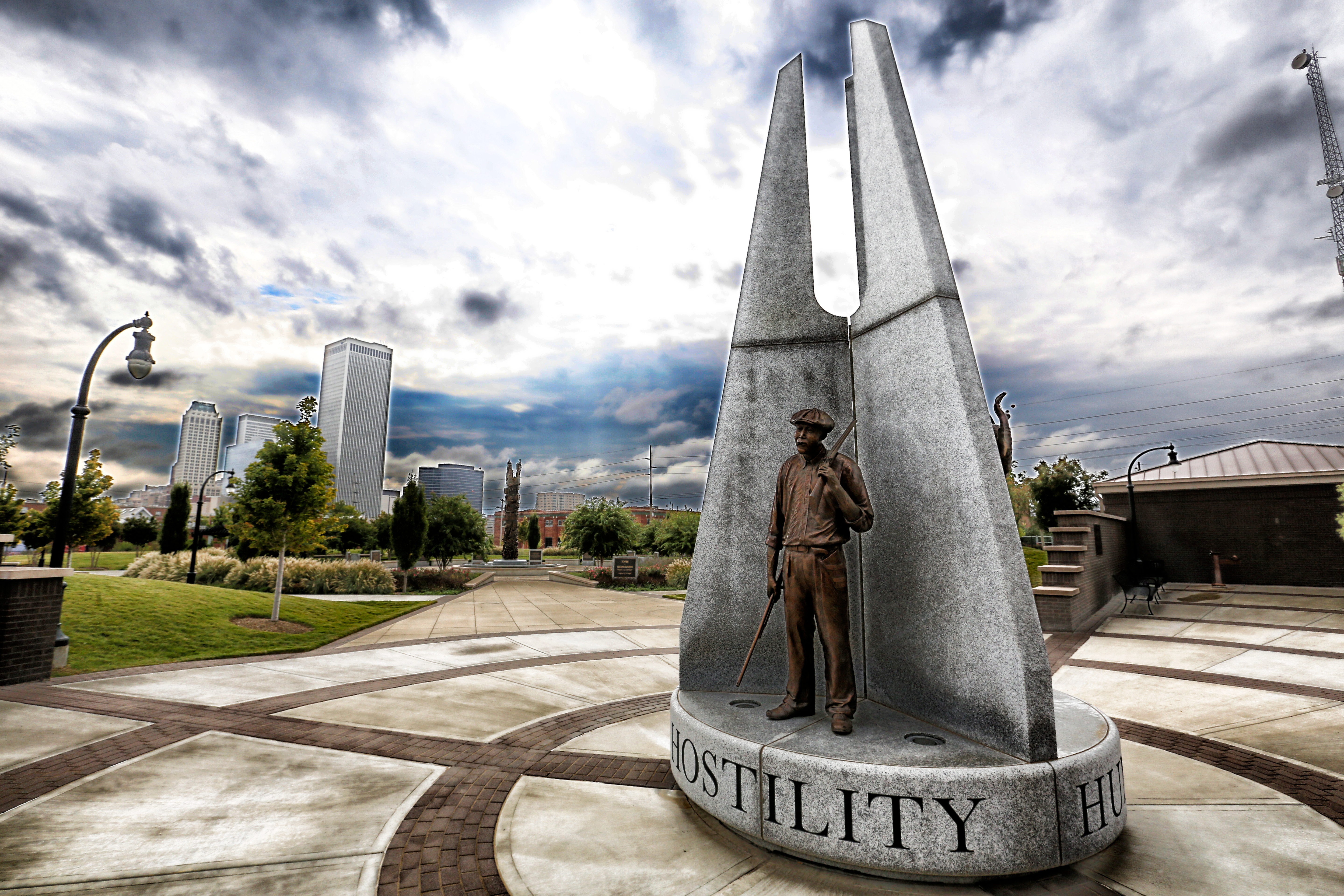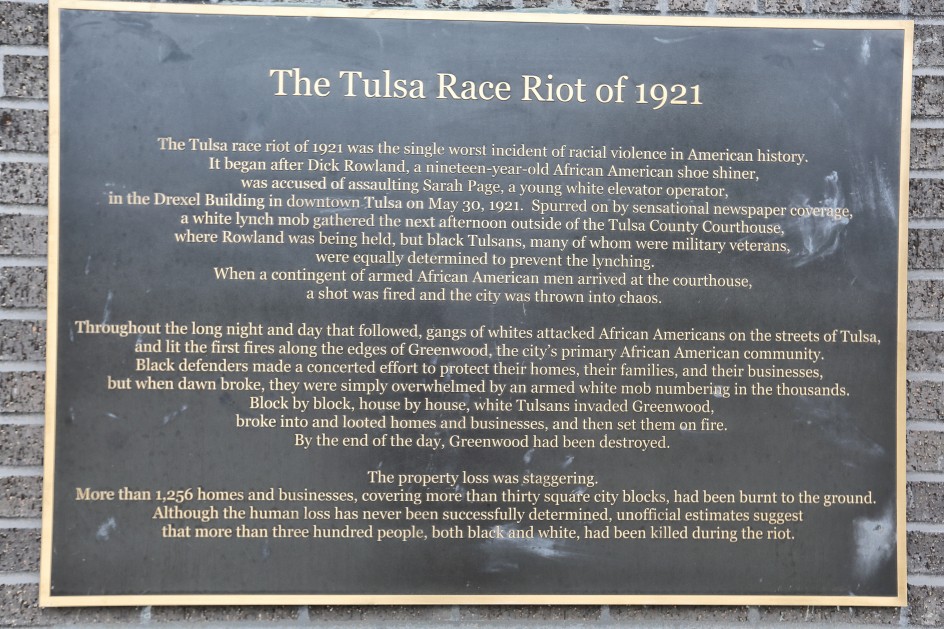
On the edge of the Tulsa downtown is a chilling park, empty and surrounded by open spaces, a ball park and empty lots. I never heard of the Tulsa Race Riot until Friday, it occurred in 1921 are is consider by many historians to be the worst incident of racial violence in American history. Greenwood, just outside the central business district in Tulsa, was called the “black Wall Street” at the time, it was one of the most prosperous and successful black middle-class communities in the world.
The riots began after a young black man was accused of assaulting a white female elevator operator, that night and through the next morning thousands of whites, including the KKK, police officers and members of the state militia, descended on Greenwood, invaded people’s homes, gunned down blacks in the streets, killed hundreds of people and set fire and looted the entire neighborhood. There was almost nothing left of Greenwood, and today there is just a tiny black of brick storefronts (efforts to rebuild were demolished in an urban renewal project). The park is eerily quiet and I was surprised that I had never heard of the Tulsa riots, this lonely and haunting park is an effort by the city to heal the wounds of that awful massacre, which continue to this day. A few years ago, the aging survivors of the riots filed suit against the city and state seeking damages, but the state courts refused to permit the lawsuits to go forward, citing the statute of limitations.
The park feels like a holocaust memorial, it is meant to be a healing place, and I suppose in many ways, it is. I thought I should share this story, the park is standing on the ashes of what was once the heard of one of the most vital black communities in America.


